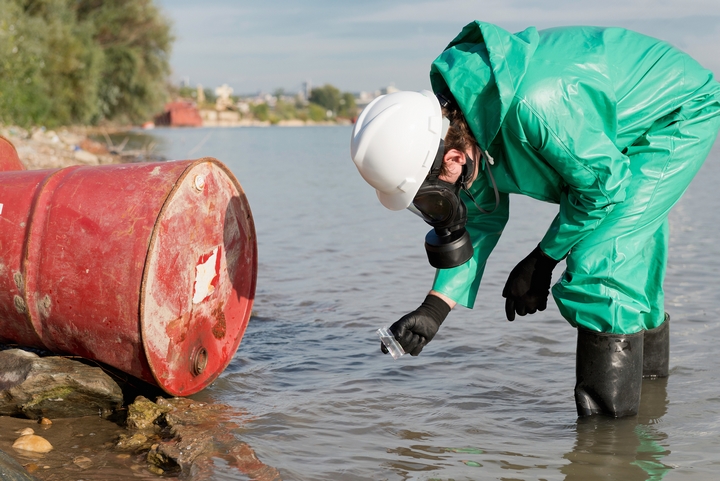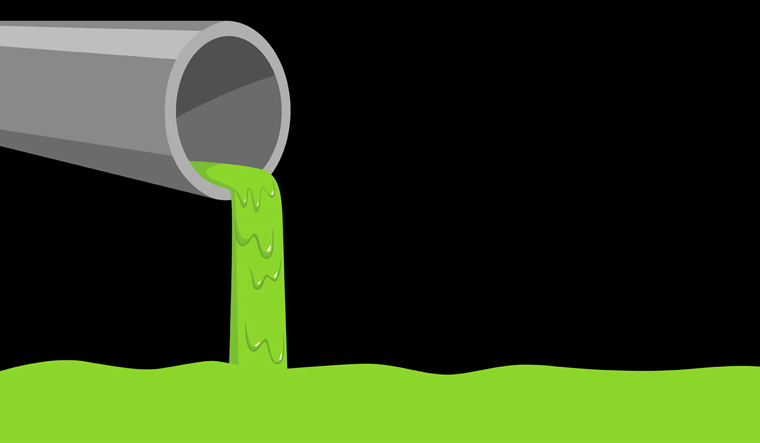Exactly How Liquid Waste Disposal Functions: A Detailed Overview of Strategies and Technologies Used

Overview of Fluid Waste Kind
The complexity of fluid waste types necessitates a detailed understanding of their qualities and effects for disposal. Fluid waste can generally be classified into a number of types, consisting of industrial, metropolitan, agricultural, and unsafe waste. Each category displays distinct properties, calling for details monitoring approaches to alleviate ecological and wellness threats.
Industrial liquid waste stems from manufacturing procedures and frequently includes a range of contaminants, such as heavy steels, solvents, and natural compounds. Municipal liquid waste, primarily comprising wastewater from homes and business facilities, consists of raw material, nutrients, and virus (industrial wastewater treatment). Agricultural fluid waste, consisting of drainage from farms, may contain plant foods, pesticides, and animal waste, presenting risks to water top quality and ecosystems
Hazardous liquid waste is identified by its toxicity, reactivity, or possible to trigger harm. This category consists of substances like acids, bases, and specific chemicals that require rigorous handling and disposal protocols. Comprehending these varied liquid waste kinds is important for establishing reliable disposal methods and making certain conformity with environmental guidelines. Correct category and characterization are necessary for executing proper therapy strategies and reducing the damaging effects on public wellness and the setting.
Physical Treatment Approaches

Screening is the initial action, where larger fragments and particles are eliminated from the liquid waste utilizing screens or grates. This process shields downstream tools from damage and makes certain smoother operation. Adhering to testing, sedimentation makes use of gravitational force to different solids from fluids. In sedimentation storage tanks, heavier bits clear up near the bottom, developing a sludge layer, while the clarified fluid can be additional treated.
Filtering is one more crucial method that involves passing the liquid via permeable products, such as sand or membrane layers, to catch smaller bits. This action improves the quality of the fluid, making it ideal for succeeding treatment procedures.

Chemical Therapy Techniques
Chemical therapy strategies are crucial for effectively taking care of liquid waste, particularly in resolving dissolved and colloidal impurities that physical methods may not appropriately Learn More remove. These strategies make use of numerous chemical representatives to counteract, speed up, or change hazardous substances right into much less hazardous forms.
One typical method is coagulation and flocculation, where chemicals such as alum or ferric chloride are contributed to promote the gathering of put on hold bits. This process enhances sedimentation, permitting easier elimination of the resulting sludge. Additionally, oxidation processes, employing representatives like chlorine or ozone, are used to damage down complicated natural compounds and virus, rendering the waste more secure for discharge or further therapy.
Neutralization is an additional vital strategy, which changes the pH of acidic or alkaline waste streams to neutral degrees, protecting against prospective injury to downstream systems and the setting. Moreover, progressed oxidation procedures (AOPs) make use of mixes of oxidants and ultraviolet light to weaken relentless pollutants, achieving a higher degree of treatment effectiveness.
Organic Therapy Processes
Organic therapy processes play an essential function in the monitoring of fluid waste by making use of microbes to decay raw material and lower contaminant degrees. These procedures can be broadly classified into anaerobic and aerobic therapies, each using specific microbial communities to attain reliable waste degradation.
Cardio therapy entails making use of oxygen to promote the break down of organic materials by germs. This process is generally executed in activated sludge systems, where aeration tanks supply a helpful environment for microbial growth, resulting in the oxidation of natural toxins. The resultant biomass can be divided from treated effluent via sedimentation.
In comparison, anaerobic therapy occurs in the absence of oxygen, counting on various microorganisms to break down natural issue. This technique is specifically useful for high-strength waste, as it produces biogas, a renewable resource resource, while lowering sludge production. Technologies such as anaerobic digesters are regularly used in commercial and metropolitan applications.
Both cardio and anaerobic biological therapies not only reduce the ecological effect of liquid waste however likewise help with source recovery, making them important elements of sustainable waste management methods. Their effectiveness, efficiency, and flexibility sustain their prevalent application throughout different fields.
Emerging Technologies in Disposal
Ingenious approaches to fluid garbage disposal are quickly advancing, driven by advancements he said in modern technology and a boosting focus on sustainability. Amongst these emerging innovations, membrane bioreactors (MBRs) have actually acquired grip for their capacity to combine organic treatment with membrane layer filtration, resulting in high-grade effluent that can be recycled in different applications. MBRs enable smaller footprints and more efficient procedures contrasted to traditional systems.
One more promising development is using anaerobic food digestion incorporated with nutrient healing innovations, which not just treats liquid waste but also generates biogas and recovers valuable nutrients like nitrogen and phosphorus. This double benefit improves resource efficiency and reduces environmental impact.
Additionally, advanced oxidation procedures (AOPs) are being embraced for the destruction of intricate natural pollutants. These methods utilize Bonuses effective oxidants and drivers to break down impurities at the molecular degree, supplying an extremely efficient solution for tough waste streams.
Additionally, the integration of expert system and artificial intelligence in waste administration systems is enhancing functional performance and predictive maintenance, leading to decreased prices and improved ecological compliance. These technologies show a considerable change in the direction of even more efficient and sustainable liquid waste disposal methods.
Final Thought
Finally, efficient fluid garbage disposal demands a thorough understanding of numerous strategies and innovations. The integration of physical, chemical, and biological therapy approaches guarantees the reliable monitoring of varied waste types. Moreover, the introduction of innovative innovations enhances treatment effectiveness and promotes sustainability in waste administration practices. By continuously advancing these methods, it becomes possible to attend to the expanding difficulties related to liquid waste, ultimately adding to environmental security and source healing.
Fluid waste disposal is an important facet of ecological management, needing a comprehensive understanding of numerous strategies and innovations tailored to various waste types. Fluid waste can generally be categorized right into a number of kinds, consisting of industrial, community, agricultural, and harmful waste. Agricultural liquid waste, consisting of overflow from farms, might have fertilizers, pesticides, and pet waste, posturing dangers to water high quality and communities.
Different physical therapy techniques play a crucial role in taking care of fluid waste effectively - industrial wastewater treatment.In verdict, efficient fluid waste disposal demands an extensive understanding of different techniques and innovations